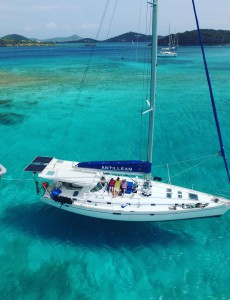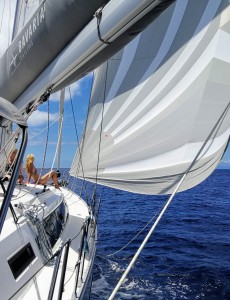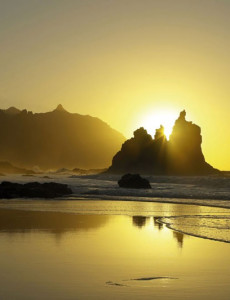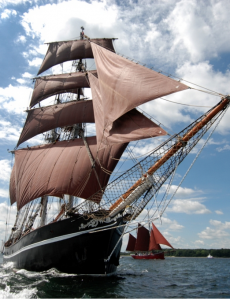
Atlantic Ocean
About the Atlantic Ocean
The Atlantic Ocean is the second largest of Earth’s oceans and covers about 20 per cent of its surface. It divides the “New World” from the “Old World”. It fills an S- shaped basin spanning between Europe and Africa in the east and the Americas in the west. In the north it’s joined to the Arctic Ocean and is connected with the Pacific Ocean, the Indian Ocean and the Southern to the southwest, the southeast and the south, respectively. The ocean is divided into two by the Equatorial Counter Current into the Northern Atlantic Ocean and the Southern Atlantic Ocean. It is divided by the Mid-Atlantic Ridge, an underwater mountain range. Furthermore, in the western Atlantic, the ocean floor is dominated by carbonate platforms, like the Blake Plateau and the Bermuda Rise. Two of the most famous trenches are the Puerto Rico Trench in the western Atlantic and the South Sandwich Trench in the Southern Atlantic. The ocean’s deepest point is found in the Puerto Rico Trench at 8,486 metres. The Laurentian Abyss is located off the eastern coast of Canada.
The water temperature varies from between -2 degrees Celsius and 30 degrees Celsius depending on where you are. The Atlantic Ocean is also home to the infamous Bermuda Triangle. Some of the most popular sailing areas in this part of the world are the Canary Islands, Bermuda, Cape Verde and the Azores.

Top destinations in Atlantic Ocean
-

-

-

-

-


Recommendations
Let’s find out some cool facts about the Atlantic Ocean and what attractions this part of the world holds for travellers if you’re planning a fabulous cruise.
- The Atlantic Ocean’s most popular sailing charter areas include the Canary Islands, the Azores, Bermuda and Cape Verde.
- The Atlantic incorporates many different gulf, seas and bays because of its uneven, irregular coastlines. Some of these include the Black Sea, the Baltic Sea, the Caribbean Sea and the Norwegian Sea.
- 52 nations have are connected to this ocean.
- The highest tides on Earth happen in the Bay of Fundy in Canada.
- The Atlantic Ocean also produces enormous waves due to the strong winds between the southern tip of South Africa and South America.
- Icebergs are common in the north-western Atlantic between February and August but have been sighted as far south as Madeira and Bermuda.
- In the 1850s the Atlantic became the first ocean crossed by a passenger liner. The first crossing by air was completed in 1927 by Charles Lindbergh.
- The Bermuda Triangle is the site of several mysterious disappearances of ships and aeroplanes. It is a triage of water from the coast of Miami to the shores of Puerto Rico and Bermuda.
- The world Atlantic derives from Greek mythology. The titan Atlas opposed the rule of the Olympian god Zeus. In consequence, he was condemned by Zeus to hold up the sky for all eternity. The world Atlantic is thought to have been used as early as 450 BC.
So what should you take with you on your Atlantic cruise? You will, of course, need to take all the right documentation with you on the day you set off, including your cruise and travel document and passport. If you’re wondering what else to take with you on your Atlantic cruise, we’ve got just a few ideas to get you started. You’ll probably need to pack some comfortable walking shoes for when you’re busy sightseeing, along with a waterproof jacket just in case, as well as a slash-proof backpack to make it easy to carry your belongings. You may also want to take along some sailing gloves with you. Of course, you’ll be hoping to soak up a bit of sun, so don’t forget sun cream and sunglass and perhaps even a sunhat. You can always check our site for seasonal temperatures and tips about the weather in the Azores, Bermuda, and the Canary Islands before you travel so you know what kind of outfits to pack. You’ll want to include swimwear in the
selections you make too. You may also choose to bring all the electronic devices you want with you, like your phone, your headphones, your tablet or you’re kindle so that you’ll be well set up with on-board entertainment. Remember to bring a camera with you so that you can take some beautiful photos while you’re on holiday.
So what are you waiting for start planning your dream cruise to the wonderful archipelagos in the Atlantic today!
All destination regions

Caribbean Sea
The Caribbean Sea, in the Western Hemisphere of the Atlantic Ocean, counts over 7000 islands, of which fever that 10% are inhabited. Among the most renowned islands are: Antigua and Barbuda, the Barbados islands, the Dominican Republic, Guadeloupe and Martinique, Saint Martin, Grenada, Haiti, Honduras, Jamaica, Saint Vincent and the Grenadines, Trinidad and Tobago, the Briti...
See all destinations

Mediterranean Sea
The Mediterranean Sea stretches from the Atlantic Ocean in the west to Asia in the east. It divides Europe from Africa. It has been referred to as the incubator of Western Civilisation. It spans approximately 2,500 miles from west to east, from the Strait of Gibraltar, located between Morocco and Spain, to the southwestern coastland of Turkey and on to the Gul...
See all destinations
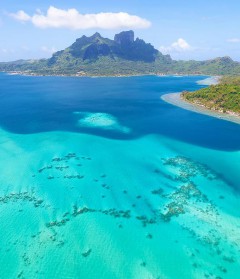
Pacific Ocean
The Pacific Ocean is both the deepest and largest ocean in the world. It runs from the Arctic Ocean to the Sothern Ocean in the south. It is connected to Australia and Asia in the west and the Americas in the East. It makes up about 46 per cent of the Earth’s water surface. It is subdivided by the equator in the Northern Pacific Ocean and Southern P...
See all destinations
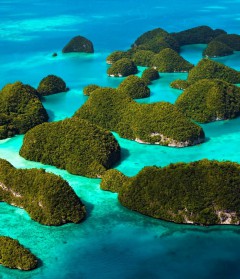
Indian Ocean
This ocean makes up about one-fifth of the water on the planet and is the largest after the Pacific and Atlantic Oceans. It stretches to Asia in the north and to Africa in the west. To the east, it is bounded by Australia and reaches to the Southern Ocean. It encompasses the Persian Gulf and the Red Sea. It is surrounded by land on all but one side. It doesn&r...
See all destinations
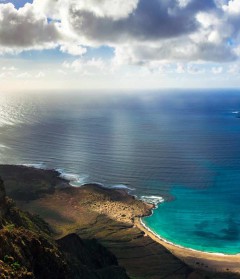
Atlantic Ocean
The Atlantic Ocean is the second largest of Earth’s oceans and covers about 20 per cent of its surface. It divides the “New World” from the “Old World”. It fills an S- shaped basin spanning between Europe and Africa in the east and the Americas in the west. In the north it’s joined to the Arctic Ocean and is connected with t...
See all destinations
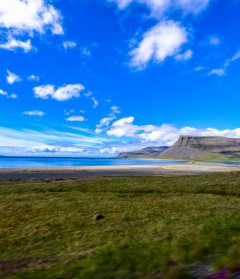
North Seas
The North Sea is found between the UK, Norway, Sweden, Denmark and France. It also stretches between Germany, the Netherlands and Belgium. It is a marginal sea of the Atlantic Ocean and is joined to it by the English Channel in the south and the Norwegian Sea in the north. The North Sea has long been the site of important European shipping lines and is al...
See all destinations






